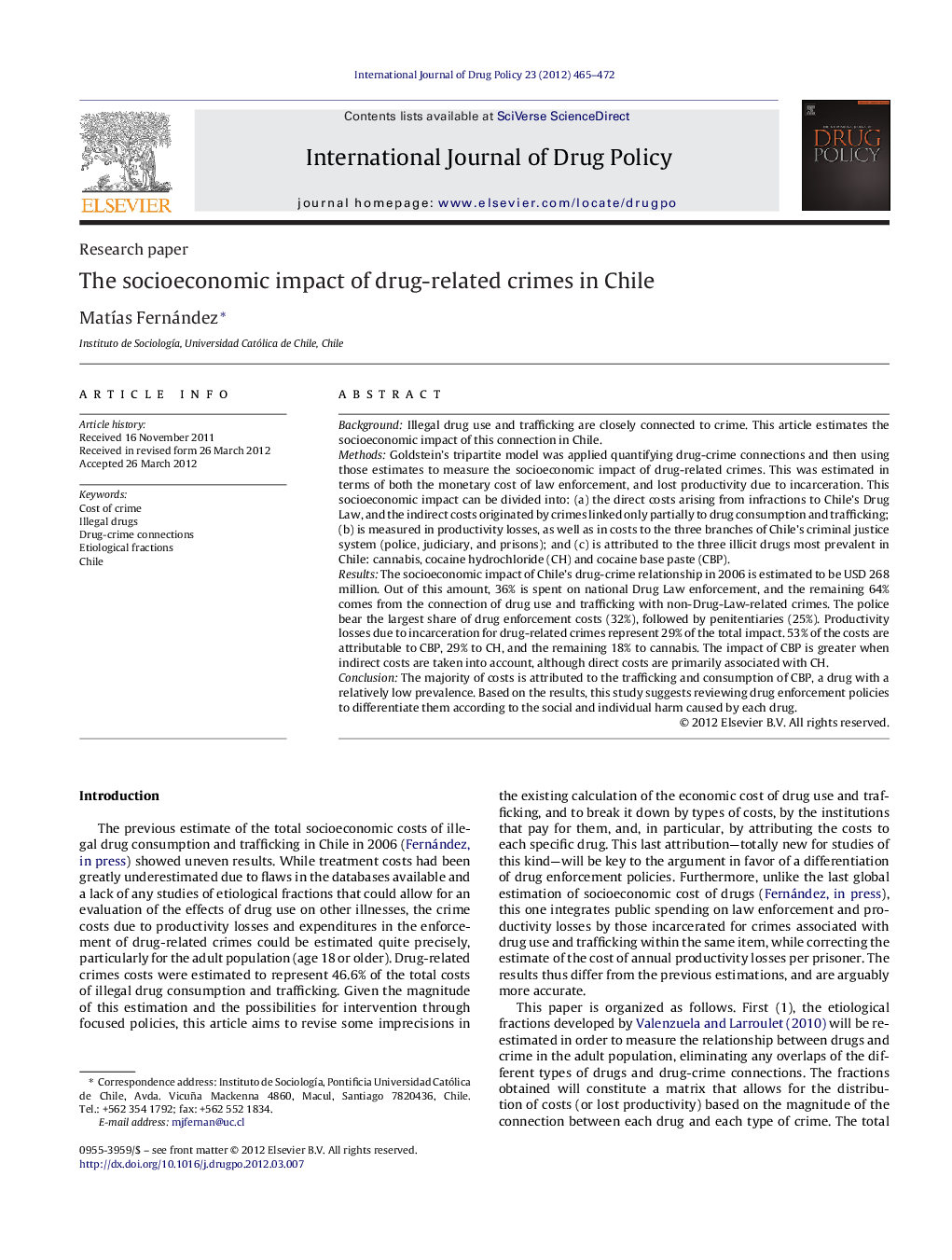| Article ID | Journal | Published Year | Pages | File Type |
|---|---|---|---|---|
| 1075168 | International Journal of Drug Policy | 2012 | 8 Pages |
BackgroundIllegal drug use and trafficking are closely connected to crime. This article estimates the socioeconomic impact of this connection in Chile.MethodsGoldstein's tripartite model was applied quantifying drug-crime connections and then using those estimates to measure the socioeconomic impact of drug-related crimes. This was estimated in terms of both the monetary cost of law enforcement, and lost productivity due to incarceration. This socioeconomic impact can be divided into: (a) the direct costs arising from infractions to Chile's Drug Law, and the indirect costs originated by crimes linked only partially to drug consumption and trafficking; (b) is measured in productivity losses, as well as in costs to the three branches of Chile's criminal justice system (police, judiciary, and prisons); and (c) is attributed to the three illicit drugs most prevalent in Chile: cannabis, cocaine hydrochloride (CH) and cocaine base paste (CBP).ResultsThe socioeconomic impact of Chile's drug-crime relationship in 2006 is estimated to be USD 268 million. Out of this amount, 36% is spent on national Drug Law enforcement, and the remaining 64% comes from the connection of drug use and trafficking with non-Drug-Law-related crimes. The police bear the largest share of drug enforcement costs (32%), followed by penitentiaries (25%). Productivity losses due to incarceration for drug-related crimes represent 29% of the total impact. 53% of the costs are attributable to CBP, 29% to CH, and the remaining 18% to cannabis. The impact of CBP is greater when indirect costs are taken into account, although direct costs are primarily associated with CH.ConclusionThe majority of costs is attributed to the trafficking and consumption of CBP, a drug with a relatively low prevalence. Based on the results, this study suggests reviewing drug enforcement policies to differentiate them according to the social and individual harm caused by each drug.
